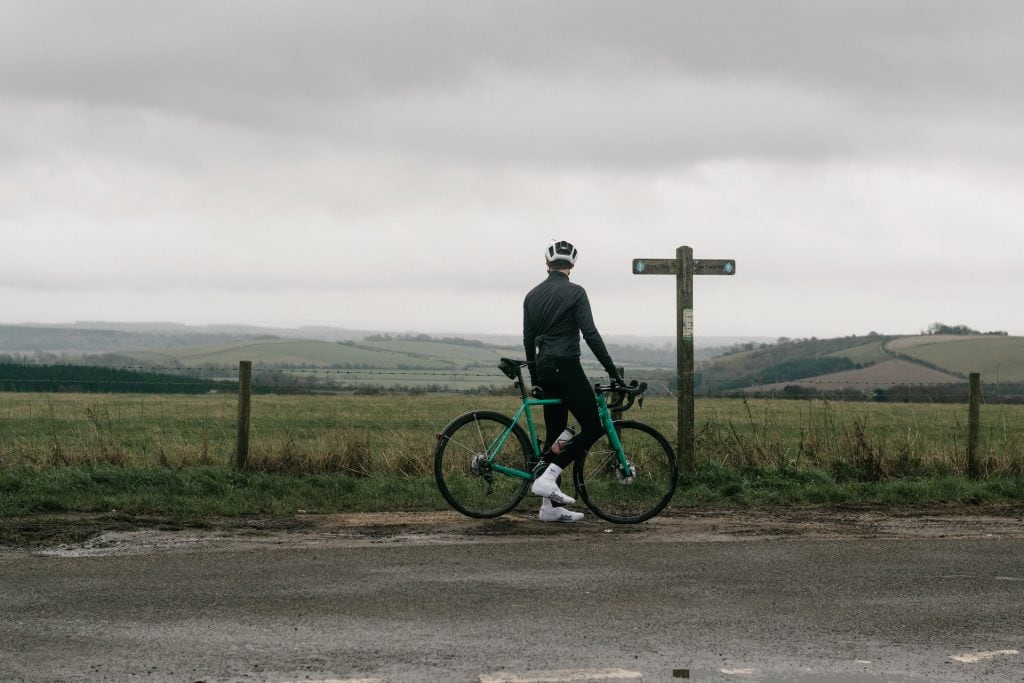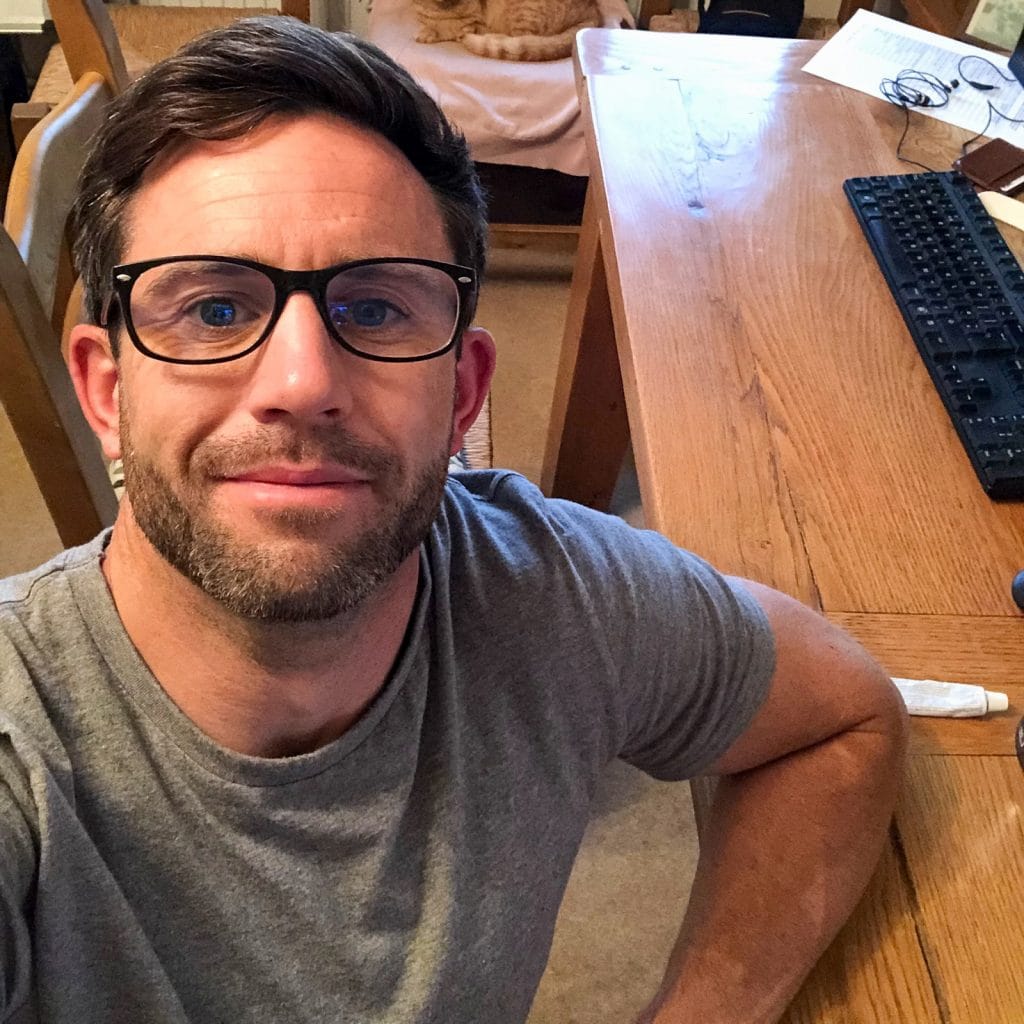The 1.5km ocean swim had gone better than expected thanks to glorious weather and extremely flat water. Transitioning for the bike I had a confidence and enthusiasm that saw me hit a faster than usual pace on the 40km out and back ride. I felt strong. But as soon as I started the 10km run of my first Olympic distance triathlon I knew I’d made a mistake.
500m in and the first hill caused both my quads to lock up with cramp, forcing me to use my hands to physically force my legs up the steep incline. With another 9.5km of technical, hilly coastal path to go in a not so glorious 36°C, I knew I was in for a painful finish.
It took mental strength to persevere and push through to finish the race but what happens when you believe you don’t have that capacity to continue?
“What comes after perseverance? After you feel like you’ve reached your limits, exhausted all of your resources and there doesn’t seem to be anything left to tap into? The ability to wield courage in the face of adversity and stay hopeful amidst impossible circumstances has always been crucial to the survival of our species.
How we respond to adversity also has a significant impact on our well-being, so it makes sense that a deeper understanding of the determinants of resilience is not just ‘good for us’, but is an actual necessity.”
This is a quote from Emilia Lahti, an expert on ‘sisu’ which is a 500-year old construct from her native Finland. It relates to mental toughness and the ability to endure significant stress while taking action against seemingly impossible odds. In Finland sisu is a way of life, a philosophy, which has impacted the lives of generations of people.
Most notable was during the ‘Winter War’ of 1939-40 when the soviet army marched over the Finnish border supported by more than 6,000 armored tanks and almost 4,000 aircraft. With only 32 tanks and 114 aircraft the Finns mounted their defence.
Fighting in temperatures that dropped to 40 degrees below zero, and surrounded by darkness for almost 18 hours a day, the outnumbered natives struggled in the face of almost certain death. But despite taking more than 70,000 casualties, they fought the Soviets to a standstill, killing or injuring over 300,000 of the invading force.
Ask any Finn and they will tell you that victory was a direct result of sisu. But what actually is it?
Sisu explained

Photo by Tom Austin on Unsplash
There is no precise definition for sisu and so it is not easily translated to other languages. It comes from a Finnish root word that implies “inner” or “inside.”
According to a wide scale study that Lahti conducted in 2013, it denotes: “An internal, latent force that moves you forward when you think you have reached your limit.”
It is almost like a spare tank of gas. An individual’s ability to surpass preconceived limitations, either mentally or physically, by accessing stored-up energy reserves.
Lahiti discovered that sisu is more about taking action against the odds and stretching beyond one’s observed capacities, than about pursuing long term goals. It relates to what we do when we face formidable obstacles while striving for a goal.
It is this emphasis on short term intensity rather than long term stamina that sets it apart from other related constructs such as grit, which is an “individual’s perseverance of effort combined with the passion for a particular long-term goal.”
Think of it like this; when you reach the end of your physical, emotional and psychological endurance while striving for something, sisu is that ‘second wind’ of inner strength that allows you to continue.
The action mindset
In the summer of 2017 I experienced a moment of sisu and it was far more testing than finishing a triathlon.
In 2015 I decided to leave the military having achieved a lifelong dream to serve within UK Special Forces. Seeking a new challenge I started a new life in the city of London working for a management consultancy. However, although the company was great I quickly (as in within a week) realised this was not the path for me.
And so began the pursuit of a new passion, to start and run a business. Fast forward 2 years, having just left the consultancy, the business I had been building on the side, pouring hundreds of hours and all of my savings into, came to an end.
This was a dark moment to say the least. At 34 I’d gone from the very top of my career in my old life to the very bottom in this new one. Perhaps starting something from scratch was beyond me, honestly I wasn’t sure. But that ‘second wind’ forced me to act.
Rather than getting another job in the city I was fortunate enough to have the opportunity to move back home and start from scratch. So for the next 12 months I worked from my parents’ dining room on something I truly cared about—The Natural Edge.

Lahti asserts that sisu contributes to something she names the action mindset: “A consistent, courageous approach toward challenges which at first seem to exceed our capabilities.
“If we dare to reach beyond our present situation, we start to act and move toward our goals, pushing past our barriers. These barriers might be fear, uncertainty, physical pain or lack of trust in oneself, among many other such limits. As we step past this boundary, we redefine it as a frontier—what could have been the end has become the beginning.”
As humans we are programmed to seek out a comfortable state, and to remain in preservation mode until the balance is disturbed either through our own choice or through events forced upon us.
Our brains like this place of equilibrium because it is a place of safety that saves valuable energy, but it also hinders our growth. In order to thrive and evolve, we must step out of the familiar zone, and engage in activities which stretch our mental and physical reserves.
Adopting an action mindset will allow you to reach beyond the observed limitations of your present moment and create new realities for yourself. It might mean applying for a job you believe you have no chance of getting, or finally asking that person out, or signing up for that race before knowing that you can actually complete it.
In this sense an action mindset contributes to how we approach challenges and problems. Do we meet them head on or are we paralysed by the idea of every possible thing that might go wrong? As Lahti points out, “the answer has a huge impact on the kind of decisions we make and, therefore, how we spend our lives. We are what we choose to do.”
The dark side of sisu
In the same 2013 study Lahti also discovered from the data “that too much sisu can result in burnout, exhaustion, disconnection and even create an attitude of mercilessness as the individual imposes his or her own harsh standards on others.”
This is even more interesting in light of the current social media culture that glorifies a ‘better, faster, stronger’ mentality. But as one respondent pointed out, too much sisu leads to a denial of the realities of life. If you persevere for too long, the results can be damaging.
And so it was for me in 2017: In reality I should have put that first business to bed six months sooner but when you are in that mode of silent relentlessness it can be difficult to pull yourself back and look at the bigger picture.
Final word
Sisu is part of a broader phenomenon relating to a set of psychological key competencies which enable action to overcome a mentally or physically challenging situation. Sisu is the second wind of mental stamina.
A large majority of the respondents from Lahti’s survey believed one’s potential to display sisu is something they are born with. Despite this, an even higher percentage (83%) believed that regardless of how little sisu one is ‘born with’, they have the power to cultivate and develop it during their lifetime.
It would seem the best way to achieve this is through an adoption of the action mindset—a consistent, courageous approach toward challenges which at first seem to exceed our capacities. This encourages us to reach beyond our perceived limits, and stretches the existing boundaries of our psychological strength.
As Lahti rightly points out: “We don’t know how strong or capable we truly are before we are at the proverbial edge and push beyond it.”

Photo by Harry Gillen on Unsplash
- Listen to the Evolve to Succeed podcast with Simon Jeffries here.
- Want to make sure you receive the latest insights from Evolve? Sign up to our weekly newsletter here.
